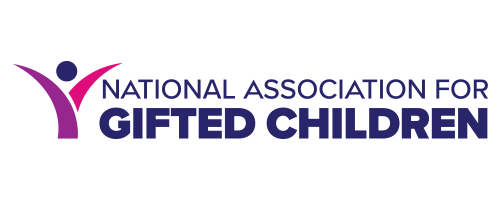Pride and Gifted Education Build a Better World for LGBTQ+ Learners
By Doug Alexander & Andy Parra-Martinez
In a sane world, winning a state championship should be a well-earned celebrated instance of glory for a talented young person. However, last month, as sophomore Aayden Gallagher crossed the finish line first, winning the 200-meter race at the Oregon School Activity Association (OSAA), she was met with cruel boos and hostility from event attendees. Further, she was accused of cheating and her talent was questioned. Why the derision? Aayden is transgender. And like many talented LGBTQ+ youth in schools and at school events she had to endure yet another disgusting occurrence of bigotry. Read the story here (Lavietes 2024).
Like Aayden, many LGBTQ+ kids and teens who are also gifted and talented experience the challenges of a hateful world. It’s hard to navigate the masses of people and policymakers who are still stuck somewhere within a continuum of hatred, ranging from prejudice to violence, as illustrated in Hicks’s (2006) report and the most recent National Survey of School Climate (GLSEN, 2021). Despite slow progress, these reports reveal the remaining hostility that society and schools in particular still carry against LGBTQ+ people. Thus, we need Pride. Pride Month, celebrated in June every year, is the reminder of why such large-scale LGBTQ+ awareness is necessary. For our community, Pride is remembrance, resistance, freedom, and fun.
For the gifted education community, Pride Month is an opportunity to use the power of transformational giftedness of LGBTQ+ learners to counteract the influence of toxic giftedness. According to Sternberg (2023), toxic giftedness is “used for negative and even harmful ends'' such as creating and promoting anti-LGBTQ+ legislation. Toxic leaders use their gifts, power, and influence to undermine human rights by banning information, limiting discussion, undermining opportunity, restricting healthcare, by making us invisible.
On the contrary, “transformationally gifted individuals seek positively to change the world at some level--in their own way, to make the world a better place” (Sternberg, 2020). This is what most gifted and talented LGBTQ+ children have to do at some point in their lives. To resist and survive this anti-LGBTQ+ society, learners use their self-transformational giftedness to cope and adapt to challenges. Others go further, they transform the world with their intelligence and creativity, by becoming icons, fighters, and activists (Parra-Martinez & Treat, 2022). Many gifted LGBTQ+ people have fought for social acceptance, inclusion, recognition, and respect of their rights and the rights of others. Their transformational power made space in this world for them and others. But, self-advocacy can’t be the only way. All gifted individuals in education, leadership, and in positions of power have a human duty to use their intelligence, creativity and talents to make the world a better place for those who are not visible, for those who are oppressed.
Our gifted LGBTQ+ young people need caring adults who can see, hear, and understand them. That is our primary objective here within the NAGC LGBTQ+ network. We welcome anyone and everyone (you don’t have to be gifted nor identify as LGBTQ+). Please consider joining our efforts to help raise awareness about the realities and needs of these vulnerable kids and teens. Help us grow our community!
Research suggests that gifted young people tend to be more aware and sensitive to not only their immediate environment (Gere et al. 2009) but also to media representations about giftedness (Bergold, Hastall & Steinmayr, 2020; Dunan et al., 2020). Research also indicates that LGBTQ+ youth tend to look toward media and pop culture for role models (Bird, Kuhns & Garafalo, 2012; Greensmith & King 2020; Berger et al., 2022). While research about the overlap of giftedness and LGBTQ+ identity is limited, it stands to reason that gifted LGBTQ+ youth are indeed paying close attention to media and are influenced by pop culture representation. Since much progress has been made with LGBTQ+ acceptance and rights in the past 50 years, there is more LGBTQ+ representation in the media than ever before. Educators and families can utilize the media’s positive portrayals of gifted and talented LGBTQ+ people to help guide gifted LGBTQ+ youth toward finding community, understanding themselves, and providing potential role models. The Gay & Lesbian Alliance Against Defamation (GLAAD) publishes an annual “20 Under 20” list honoring young LGBTQ people “who are accelerating acceptance of LGBTQ people while shaping the future of media and activism” (see last year’s list). The Advocate recently compiled a list of “LGBTQ+ celebrities and activists TIME called the Most Influential People of 2024.” Additionally, positive LGBTQ+ representation is becoming more common in pop culture. Recent examples in fiction include (but are not limited to) Disney’s The Owl House, Stranger Things, Star Wars: Asoka, Disenchantment, Batwoman, Better Nate Than Never, Red White & Royal Blue, and so on. And there is more representation than ever in music (such as Kim Petras and Billie Eilish) and sports (such as NFL’s Carl Nassib and soccer star Megan Rapinoe).
What else can you do to show your support during pride month?
- Join the LGBTQ+ Network within the National Association for Gifted Children by attending and volunteering at our events.
- Help us remember those LGBTQ+ individuals who have transformed the world in the face of discrimination and oppression.
- Display and use your talents to creatively protest and resist unjust legislation and bigotry.
- Live the transformational power of our youth giftedness and diversity by attending, volunteering, and contributing to any of the Nationwide pride celebrations during June 2024.
- Engage teachers and learners in the GLSEN survey of school climate for LGBTQ+ Learners to provide current and accurate information of the status of LGBTQ+ rights in your school.
Finally, As for Aayden Gallagher and our community, her gold-metal win was bittersweet. We must continually strive for a near future in which any young talented person’s victories are not bitter, just simply sweet. Happy Pride Month, everyone!
References
- Berger M.N., Taba M., Marino J.L., Lim M.S.C., & Skinner S.R. (2022). Social Media Use and Health and Well-being of Lesbian, Gay, Bisexual, Transgender, and Queer Youth: Systematic Review. Journal of Medical Internet Research, 24(9). DOI: 10.2196/38449.
- Bergold, S., Hastall, M.R., & Steinmayr, R. (2020). Do Mass Media Shape Stereotypes About Intellectually Gifted Individuals? Two Experiments on Stigmatization Effects From Biased Newspaper Reports. Gifted Child Quarterly, 65(1). https://doi.org/10.1177/0016986220969393
- Bird, J.D.P., Kuhns, L., & Garofalo, R. (2012). The Impact of Role Models on Health Outcomes for Lesbian, Gay, Bisexual, and Transgender Youth. Journal of Adolescent Health, 50(4), 353-357. https://doi.org/10.1016/j.jadohealth.2011.08.006
- Duncan, S., Goodwin, C., Haase, J., & Wilson, S. (2020). Neuroscience of Giftedness: Greater Sensory Sensitivity. Gifted Research & Outreach. https://gro-gifted.org/neuroscience-of-giftedness-greater-sensory-sensitivity
- Gere, D.R., Capps, S.C., Mitchell, D.W., Grubbs, E., & Dunn, W. (2009). Sensory Sensitivities of Gifted Children/Invited Commentary on "Sensory Sensitivities of Gifted Children." The American Journal of Occupational Therapy, 63(3), 288-95. https://unco.idm.oclc.org/loginurl=https://www.proquest.com/scholarly-journals/sensory-sensitivities-gifted-children-invited/docview/231968900/se-2
- Greensmith, C., & King, B. (2020). “Queer as hell media”: Affirming LGBTQ+ youth identity and building community in Metro Atlanta, Georgia. Journal of LGBT Youth, 19(2), 180–197. https://doi-org.unco.idm.oclc.org/10.1080/19361653.2020.1829524
- Hicks, T. (2006). Humanizing the Other in “Us and Them.” Peace Review: A Journal of Social Justice, 18(4), 499-506. DOI: 10.1080/10402650601030435
- Lavietes, M. (2024, May 21). Transgender Teen Booed After Winning Girls’ Track Race at State Championship. NBC News. https://www.nbcnews.com/nbc-out/out-news/transgender-teen-booed-winning-girls-track-race-state-championship-rcna153383
- Parra-Martinez, A., & Treat, A. R. (2022). The Rainbow Revolution: Empowering Gifted LGBTQ+ Learners for Transformative Action. In R. J. Sternberg, D. Ambrose, & S. Karami (Eds.), The Palgrave Handbook of Transformational Giftedness for Education (pp. 287-312). Cham: Springer International Publishing. https://doi.org/10.1007/978-3-030-91618-3_15
- Sternberg, R. J. (2020). Transformational Giftedness: Rethinking Our Paradigm for Gifted Education. Roeper Review, 42(4), 230–240. https://doi-org.ezproxy.lib.purdue.edu/10.1080/02783193.2020.1815266
- Sternberg, R. J. (2023). Toxic Giftedness. Roeper Review, 45(1), 61–73. https://doi-org.ezproxy.lib.purdue.edu/10.1080/02783193.2022.2148311


